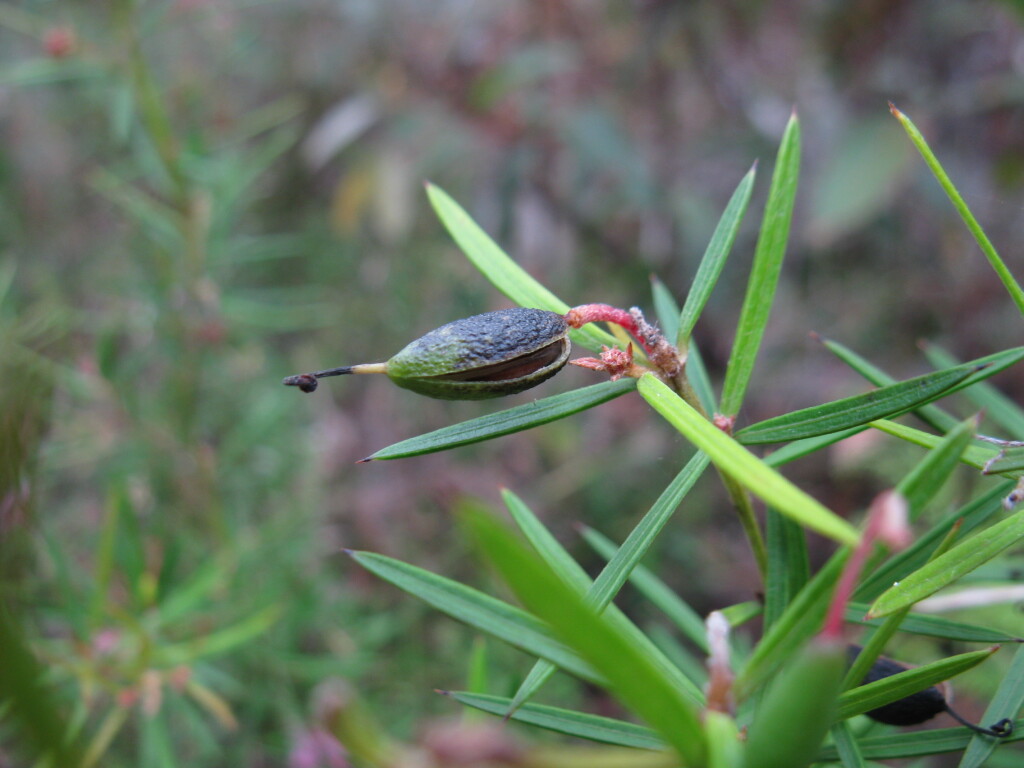Grevillea patulifolia
Gand.Erect to trailing shrub 0.2–1.6(–2.5) m high, sometimes root-suckering. Leaves entire, narrowly elliptic to sublinear, straight, 1.5–3.5 cm long, 1–1.5 mm wide; upper surface of leaf faintly scabrous or granular especially along veins; margin angularly refracted at 120° or more relative to the distinctly convex upper surface (leaf obliquely elliptic in cross-section), usually enclosing the lower surface either side of midvein. Conflorescences c. 1 cm long, sessile, regular and umbel-like or rarely subsecund; perianth pale pink to mauve (occasionally white?), outer surface with appressed hairs, inner surface with a more or less profuse beard opposite the ovary; pistil 8–8.5 mm long, ovary stipitate, glabrous, style pink or white, with minute hairs or papillae just below apex, pollen presenter oblique. Fruits glabrous. Flowers Aug.–Feb.
EGL. Also NSW. Grows in moist heath or woodland-heath associations in sandy soils in the Mallacoota area, with one record from Bemm River.
Grevillea patulifolia can be confused with G. neurophylla, the latter which often has longer and narrower, pliable, non-pungent, more strongly ascending leaves and shorter pedicels 4.5–5 mm long, and a usually shorter pistil 6–7.5 mm long.
Makinson, R.O. (1996). Grevillea. In: Walsh, N.G.; Entwisle, T.J., Flora of Victoria Vol. 3, Dicotyledons Winteraceae to Myrtaceae, pp. 845–870. Inkata Press, Melbourne.
 Spinning
SpinningMakinson, R.O. (2000). Grevillea. In: Australian Biological Resources Study, Flora of Australia vol. 17A, Proteaceae 2, ~Grevillea~, pp. 1–524. CSIRO Publishing.


